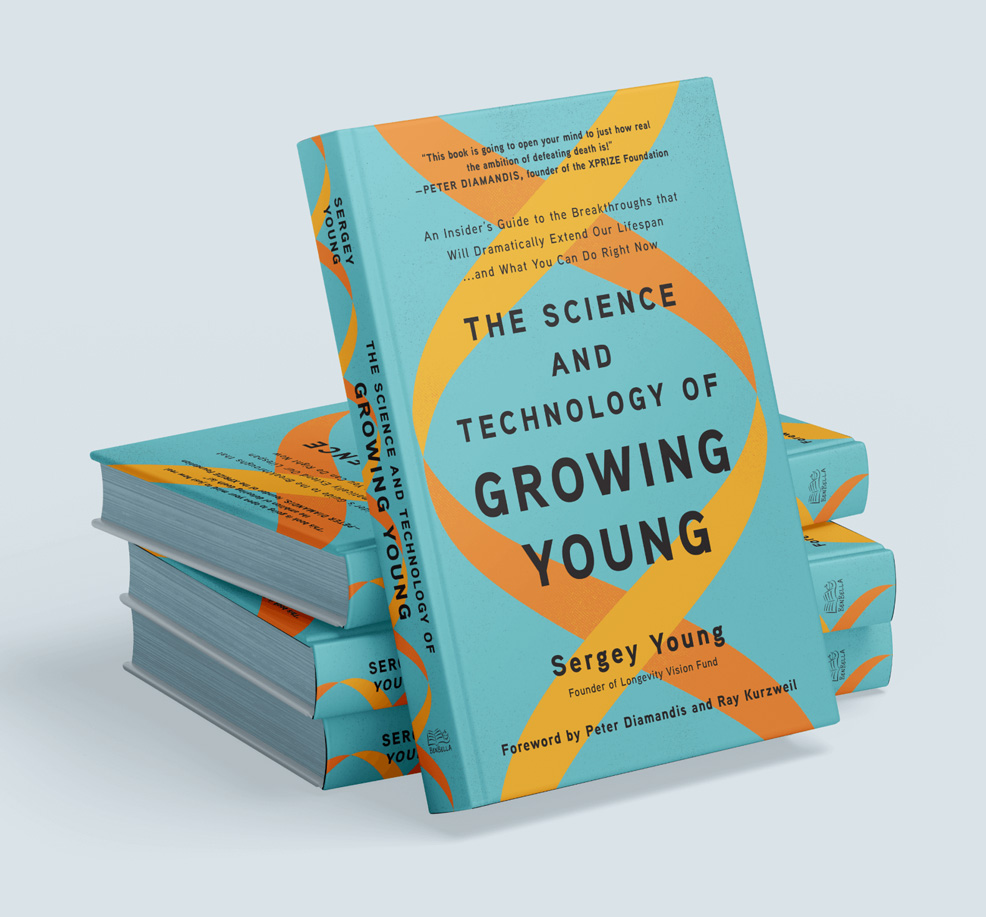
28th August 2021 The Science and Technology of Growing Young A new book, published this week, explains where aging research is heading – and what you can do today to extend your healthspan. We are giving away copies to three lucky readers.
Thanks to advances in biology and medicine, the prospect of living to 200 years old is gradually moving from science fiction to science possibility. A leader in the emerging field of longevity research has offered his perspective on what cutting-edge breakthroughs are on the horizon – as well as the practical steps we can take now to live healthily and extend our lifespans. In The Science and Technology of Growing Young, industry investor and insider Sergey Young demystifies the longevity landscape, cutting through the hype and showing readers what they can do now to live better for longer, and offering a look into the exciting possibilities that await us. By viewing aging as a condition that can be cured, we can dramatically revolutionise the field of longevity and make it accessible for everyone. Sergey gathers insights from world-leading health entrepreneurs, scientists, doctors, and inventors, providing a comprehensive look into the future of longevity in two horizons:
In a bonus chapter, Sergey also showcases 10 longevity choices that we already know and can easily implement to live to 100 – distilling the science behind diet, exercise, sleep, mental health, and our environments into attainable habits and lifestyle hacks that anyone can adopt to improve their lives and workplaces. Combining practical advice with an incredible overview of the brave new world to come, The Science and Technology of Growing Young redefines what it means to be human and to grow young. All proceeds from this book will be used to solve global longevity challenges.
Editorial reviews "A very compelling book." "Being alive and healthy is the greatest joy that exists, and there has never been a better time to be alive than today. This book is going to open your mind to just how real and close-at-hand the ambition of defeating death is!" "A comprehensive guide on longevity from a biological, technological, and ethical standpoint." "The Science and Technology of Growing Young provides a rare glimpse into the future and how our society will change due to the new ethics of immortality." "A fascinating read that you'll want to discuss with those you love. If you would like to live a long and healthy life, The Science and Technology of Growing Young is a book for you!" "The Science and Technology of Growing Young is the most important book you'll read this year—or maybe ever."
COMPETITION! We are giving away free copies of this book to our readers. For a chance of winning, just follow these steps:
And that's it! We will select three winners at random in 10 days' time.
Comments »
If you enjoyed this article, please consider sharing it:
|








